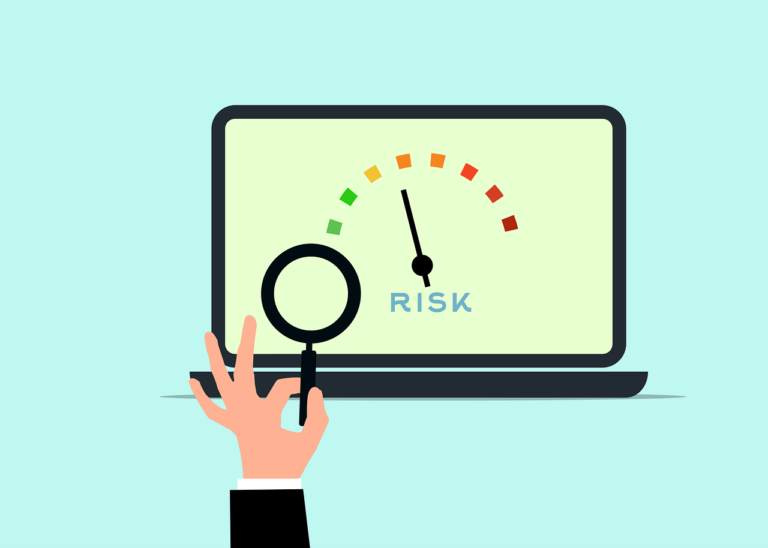How to Manage Risk And Your Retirement Investment
Learn how to manage risk and your retirement investment with smart strategies. Discover diversification, inflation protection, tax-efficient investing, and withdrawal planning to secure your financial future.
Planning for retirement is one of the most important financial goals in life. However, achieving a secure retirement isn’t just about saving—it’s also about managing risk effectively. The financial landscape is unpredictable, with market fluctuations, inflation, and unexpected economic downturns that can impact your retirement savings.
Understanding how to manage risk and your retirement investment is key to ensuring that your savings last through retirement. In this guide, we’ll explore various risk factors, strategies to mitigate them, and best practices for optimizing your retirement portfolio.
Understanding Risk in Retirement Investments
Risk is an unavoidable part of investing, but managing it wisely can help protect your wealth. When planning your retirement, you must be aware of several types of risks:
- Market Risk – The possibility that stock market fluctuations will reduce the value of your investments.
- Inflation Risk – The risk that inflation will destroy the purchasing power of your savings.
- Longevity Risk – The chance that you will outlive your savings.
- Interest Rate Risk – Changes in interest rates that affect bond values and fixed-income investments.
- Liquidity Risk – The challenge of selling assets quickly without a major loss in value.
By recognizing these risks, you can develop a solid plan to safeguard your retirement investments.
SEE ALSO: How to Invest in Startups With Little Money
SEE ALSO: Best Apps for Automated Investing – Top Picks for 2025
SEE ALSO: Jaw-Dropping Low Risk Investments with High Returns in 2025
Diversification: A Key Strategy for Managing Risk
One of the most effective ways to reduce investment risk is through diversification. Spreading your assets across different investment classes helps balance potential losses in one area with gains in another.
How to Diversify Your Retirement Portfolio
- Stocks and Equities: Growth-oriented investments that provide long-term returns.
- Bonds and Fixed Income: Stability and consistent income generation.
- Real Estate Investments: Provides passive income and hedges against inflation.
- Commodities (Gold, Silver, etc.): Protection against economic uncertainty.
- Cash and Cash Equivalents: Ensures liquidity for short-term expenses.
Balancing these classes of assets based on your risk tolerance and time horizon helps reduce overall risk in your portfolio.
Adjusting Your Risk Tolerance Over Time
Your investment strategy should evolve as you age. In your 30s and 40s, you may be comfortable with higher risk, but as retirement nears, a more conservative approach is needed.
- Early Career (20s–40s): Focus on aggressive investments like stocks.
- Mid-Career (40s–50s): Start shifting towards a balanced mix of stocks and bonds.
- Pre-Retirement (50s–60s): Increase fixed-income assets to protect savings.
- Retirement (60s and beyond): Maintain a low-risk strategy while ensuring steady income.
Adjusting risk based on age allows you to maximize returns while reducing exposure to market downturns.
Protecting Against Inflation
Inflation can significantly impact your retirement savings. To safeguard your purchasing power, consider:
- Investing in Inflation-Protected Securities (TIPS)
- Adding Dividend-Paying Stocks to Your Portfolio
- Including Real Estate or REITs as a Hedge Against Inflation
- Keeping a Portion of Your Investments in Commodities Like Gold
A well-structured portfolio should include assets that perform well in inflationary periods.
Managing Sequence of Returns Risk
One overlooked risk is the sequence of returns risk, which refers to the order in which you experience investment gains and losses. If you encounter major market downturns early in retirement, your portfolio may suffer long-term consequences.
How to Mitigate This Risk:
- Use a Bucket Strategy: Keep short-term expenses in cash or bonds while allowing equities to grow over time.
- Minimize Withdrawals During Market Downturns: Delay withdrawing funds when markets are falling to avoid selling at a loss.
- Consider an Annuity: Provides guaranteed income regardless of market fluctuations.
Should You Invest in Annuities for Retirement?
Annuities can be a dependable source of income during retirement. There are different varieties of annuities to consider:
- Fixed Annuities: Provide guaranteed payouts and are less risky.
- Variable Annuities: They offer potential for higher returns but come with market risks.
- Indexed Annuities: Tied to market performance but offer downside protection.
While annuities can provide financial security, they may come with high fees, so it’s essential to compare options before investing.
Tax-Efficient Retirement Investing
Minimizing taxes on your retirement investments can help preserve your wealth. Some tax-efficient strategies include:
- Contributing to Tax-Advantaged Accounts: Maximize 401(k) and IRA contributions.
- Using Roth Accounts: Tax-free withdrawals in retirement.
- Managing Capital Gains Taxes: Utilize tax-loss harvesting strategies.
- Diversifying Income Sources: Use a mix of taxable, tax-deferred, and tax-free accounts.
Creating a Withdrawal Strategy
Once you reach retirement, having a well-structured withdrawal strategy ensures your savings last. Consider these approaches:
- The 4% Rule: Withdraw 4% of your retirement portfolio annually for a steady income.
- Required Minimum Distributions (RMDs): Understand mandatory withdrawal rules for retirement accounts.
- Social Security Optimization: Delay Social Security benefits for a higher payout.
- Flexible Spending Strategy: Adjust withdrawals based on market conditions.
A well-planned withdrawal strategy helps balance income needs and long-term sustainability.
The Role of Emergency Funds in Retirement
An emergency fund is important in covering unexpected expenses without dipping into retirement investments. A recommended amount is 6-12 months’ worth of expenses in a liquid, low-risk account like a high-yield savings account or money market fund.
Seeking Professional Advice
If managing retirement risk feels overwhelming, consulting a financial advisor can help tailor an investment strategy suited to your needs. Look for:
- Certified Financial Planners (CFPs) for comprehensive retirement planning.
- Fee-Only Advisors to avoid commission-based conflicts.
- Robo-Advisors for low-cost, automated portfolio management.
Conclusion: How to Manage Risk And Your Retirement Investment
Understanding how to manage risk and your retirement investment is crucial for ensuring financial security. By diversifying your portfolio, adjusting risk levels over time, planning for inflation, and implementing tax-efficient strategies, you can protect your retirement savings while maximizing returns.
The key to a promising retirement planning is proactive risk management. Take the necessary steps today to build a strong financial future and enjoy a worry-free retirement.







